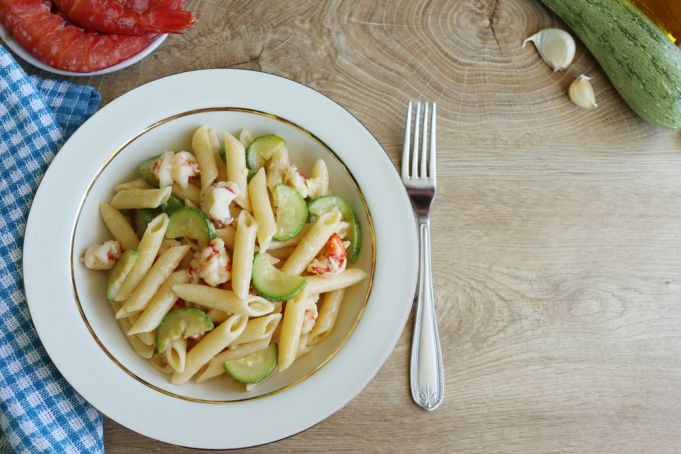One of the most popular reasons for traveling to Italy is to experience the world-renowned Italian cuisine, including classic pastas and pizzas.
More than 5 million Americans visit Italy every year, making it one of the most popular destinations for American tourists. One of the most popular reasons for traveling to Italy is to experience the world-renowned Italian cuisine, including classic pastas and pizzas. Americans indulge in Italian food while on holiday in Italy, but a key cultural difference prevents many American tourists from fully enjoying Italy’s cuisine: Americans think “carbs” are unhealthy. This fact is especially interesting against the cultural backdrop of the American diet, which is responsible for a nearly 50% adult obesity rate.
Also read:
What are carbs?
Carbohydrates, called “carbs” for short, are nutritional molecules. The carbohydrate categories are: sugars, starches, and fibers. Carbs are found in various foods, from fruits and vegetables to dairy and grains, though they are most commonly associated with grains.
There are simple “empty” carbs and complex carbs, with complex carbs being more useful for sustaining the human body. The majority of carbs are transformed into glucose in the body, which is an essential source of energy.
Because carbs turn into glucose in the body, there is a common misconception in the US that all carbs turn into “sugar” in the body, which then causes weight gain.
The truth is that some carbs are more useful to the human body than others, such as whole grains, fruits, vegetables, and beans. Processed carbs, such as white bread, white rice, and sugary desserts, spike glucose levels faster than necessary, and do not sustain the body for long. Processed carbs, also known as refined carbs or “empty” carbs, have been stripped of the nutrients that make unrefined complex carbs more nutritional.
Why are Americans afraid of carbs?

Besides being the capital of fast food, the US is also known for its prevalent diet culture. According to the Washington Post, the fear of carbs in the US came with the rise of the Atkins diet.
The Atkins diet was a lifestyle diet created by Dr. Robert Atkins in 1972. His medical research focused on the benefits of low-carb eating, emphasising protein and fats and eschewing bread, rice, and pasta.
Also read:
In the 2010s, low-carb turned to no-carb with the Paleo Diet, which focuses on the elimination of grains and processed foods. Recently, the Keto diet has been the lifestyle-diet craze, demonising carbs and prioritising the consumption of fat-heavy foods.
Through news coverage of fad diets, Americans are often fed incorrect or misguided information about nutrition. One thing is consistent: food groups regularly come in and out of vogue, and are severely antagonised when they are “out.” The reputation of carbs has never fully recovered from the 1970’s. Italy, on the other hand, has had a healthy relationship with carbs since Roman times.
What do Italians think about carbs?

Also read:
Though pasta and bread consumption have dropped with the rise of low-carb and no-carb diets, they still remain a central part of the Italian diet, and the cornerstone of Italian cuisine. And justifiably so--the Mediterranean diet is known to be one of the healthiest in the world. In Italy, only 19% of the adult population suffers from obesity, compared to a staggering 42% in the US, according to the WHO and the CDC.
Why are Italians healthier than Americans?

1. Eating in courses
Italians know that a healthy diet relies on moderation. Unlike Americans, Italians often eat their lunches and dinners in courses: the first course, called the primo, is a pasta or grain dish, in an appropriate portion. The second course, the secondo, is the protein course, made up of a meat or fish dish. The side dishes, contorni, are served alongside the secondi, and are vegetable-based dishes. Eating in courses allows for more time to digest between servings, making a person feel satiated faster and preventing overeating.
2. Eating carbs in moderation
Because Americans do not generally eat their meals in courses, when they have pasta for dinner, they eat a much larger serving than that of an Italian primo. Excessive consumption of any single food group will lead to weight gain, which is why the Italian course structure is fundamentally a healthier approach to eating than the American meal structure.
Eating in courses creates balance between food groups, helping Italians reach their nutritional requirements without the stress of creating a single meal that encompasses everything.
3. Al dente pasta
Italians cook their pasta al dente, “to the teeth,” so it retains chewiness and a pleasing texture. This requires more chewing, leading to slower digestion. Al dente pasta satiates a person faster than overcooked pasta, so smaller portions can be just as filling. By Italian standards, American pasta is mushy and far overcooked, neither pleasant to eat nor nutritional.
4. Food production standards of quality
The EU bans food additives that are not scientifically proven to be safe for human consumption. In the US, however, food additives are legal unless they are proven unsafe. Consequently, many artificial additives and preservatives are added to US food for the sake of flavor and product shelf life, not nutritional value.
Also read:
Italians have a special relationship to food: cooking is both tradition and an art, so ingredients are held to a high standard of quality. In Italy, the only ingredients in most dried pastas are semolina wheat flour and water. For example, these are the ingredients in Barilla’s classic Spaghetti in Italy.
In the US, however, the same Barilla Spaghetti contains: niacin, iron, thiamine mononitrate, riboflavin, and folic acid. While most of these additives are vitamins and preservatives, this may be the reason many Italians complain that American Barilla pasta doesn’t taste as good as it does in Italy. Not only are Americans eating pasta wrong, their pasta doesn’t taste as good to begin with.
Finally, according to Vinepair Magazine, Italy requires that all pasta be made from hard grains, as opposed to processed flour. Hard grains are complex carbs, containing proteins and vitamins. Pasta made from hard grains is more nutritious and satiating, as it takes longer to digest than pasta made from processed flour. In the US, because food laws prioritise safety over quality, most commercial pasta brands use processed flour. Processed flour is cheaper and makes the production process faster and easier.
Also read:
Is there a way for Americans to eat Italian-quality carbs?
Americans should not feel dismayed. The solution to finding quality-crafted breads and pastas in the US is often as simple as shopping locally. Some small pasta businesses in the US follow traditional Italian methods. Another solution is to order online from pasta-makers in Italy--or simply make your own using semolina wheat flour. And for goodness sake, cook your pasta al dente.

















